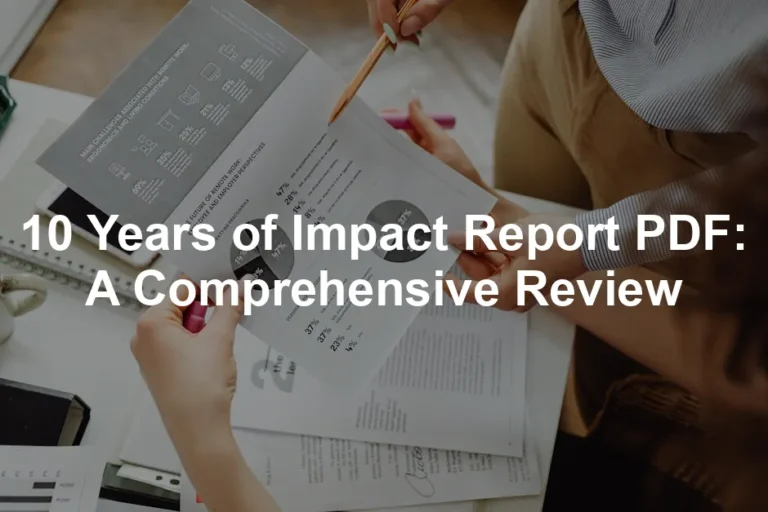Introduction
In the universe of diabetes management, the A1C test shines as a reliable guide. It’s your go-to tool for tracking blood sugar control over recent months. Picture it as a report card for your glucose levels—where trends matter as much as the grades. Whether you’re navigating the tricky waters of diabetes or just curious about sugar and your health, this guide will help you understand the A1C chart.
So, what exactly is the A1C test? It’s a blood test that measures how well your blood sugar has been controlled over the past two to three months. The A1C test is crucial for diagnosing diabetes and managing it effectively. Think of it as a window into your blood sugar history. A higher A1C level could mean trouble, as it indicates that your average blood glucose has been elevated.
Why should you care about your A1C levels? Well, keeping them within a healthy range can significantly reduce the risk of complications. High blood sugar over time can lead to serious health issues, including heart disease, nerve damage, and kidney problems. By understanding your A1C results, you’ll be better equipped to make informed choices about your diet, exercise, and medication.
Navigating this journey can be daunting, but knowing what your A1C levels mean can empower you. It helps you take charge of your health, enabling you to make lifestyle adjustments that can lead to better outcomes. As we go through this guide, you’ll learn about the various A1C ranges, what they signify, and how you can maintain healthy levels.
With this knowledge, you’ll feel more confident discussing your results with your healthcare provider. After all, managing diabetes is a team effort, and understanding your A1C test is a key part of that collaboration. So, let’s jump into the nitty-gritty of the A1C chart and demystify this important aspect of diabetes management.

Speaking of managing diabetes, if you’re looking to monitor your blood sugar effectively, consider using an Blood Glucose Monitor. It’s an essential tool for keeping your diabetes in check and can make a world of difference in your management journey!
Summary
The A1C test, also known as glycated hemoglobin, is crucial for diagnosing diabetes and monitoring blood sugar levels over time. This article will break down the details of the A1C chart, including what A1C levels mean, how they relate to estimated average glucose (eAG), and what factors can influence these results. We will explore the different A1C ranges, tips for maintaining healthy levels, and the consequences of not achieving your targets.
By the end of this article, you’ll have a solid understanding of the mechanics behind the A1C test. You’ll also pick up practical advice for better diabetes management, ensuring you’re prepared to discuss your results confidently with your healthcare provider.
Understanding the A1C test is essential for anyone dealing with diabetes. It helps you measure your blood sugar control over a significant period, providing a clearer picture than daily glucose tests. It’s a way to assess how well your treatment plan is working. With this guide, you can gain insights into how to keep your A1C levels within a healthy range, leading to improved overall health and well-being.
So, roll up your sleeves and get ready to learn how to make your A1C chart work for you. You’ll be empowered to take control of your diabetes management, making informed decisions that support a healthier lifestyle. By grasping the significance of the A1C test and its implications, you can contribute to your overall health journey with confidence.
While you’re at it, consider exploring delicious and healthy recipes with a Diabetes Cookbook. It can help you craft meals that are not only tasty but also supportive of your health goals!

Why is the A1C Test Important?
The A1C test plays a crucial role in diagnosing prediabetes and diabetes. It’s like a crystal ball, revealing how your blood sugar levels have behaved over the past two to three months. If your doctor suspects diabetes, this test can confirm it. So, if you’ve ever wondered why your doctor insists on this test, now you know!
Additionally, the A1C test is vital for monitoring diabetes management. It helps you and your healthcare provider track how well your treatment is working. Think of it as your health report card. If your A1C levels are consistently high, it’s time to reassess your diet, exercise, or medication. Keeping your A1C within a healthy range can reduce the risk of complications like heart disease and nerve damage.
In short, the A1C test is a reliable method to gauge your long-term blood sugar control. It provides valuable insights into your diabetes management and helps guide treatment decisions. So, if you’ve got diabetes, you definitely want your A1C to be your best friend!
And speaking of friends, how about a little help from an A1C Test Kit? It’s a convenient way to keep tabs on your A1C levels right from the comfort of your home!

Interpreting A1C Results
A1C Ranges Explained
Understanding A1C results is simpler than it seems! Here’s how the ranges break down:
- Normal: Below 5.7%
- Prediabetes: 5.7% – 6.4%
- Diabetes: 6.5% and above
If your test results fall into the diabetes range, don’t panic! Your doctor will likely recommend confirmatory tests. This is to ensure the diagnosis is accurate. After all, nobody wants to jump to conclusions, right?
Knowing these ranges helps you grasp where you stand. Regular monitoring of your A1C can help you make informed decisions about your health. To support your journey, consider investing in a Blood Pressure Monitor to keep an eye on your overall health!

A1C to eAG Conversion
Let’s introduce a new friend: estimated average glucose (eAG). This nifty measurement translates your A1C percentage into a format that feels more familiar—milligrams per deciliter (mg/dL).
Here’s the magic formula: eAG = 28.7 × A1C – 46.7
To make it easier, here’s a handy conversion table:
| A1C (%) | eAG (mg/dL) |
|---|---|
| 6.0 | 126 |
| 6.5 | 140 |
| 7.0 | 154 |
| 7.5 | 169 |
| 8.0 | 183 |
| 8.5 | 197 |
| 9.0 | 212 |
| 9.5 | 226 |
| 10.0 | 240 |
This table shows a clear connection between your A1C level and your average blood sugar. So, next time you see your A1C percentage, you can quickly convert it to eAG and feel more in control!
Age and A1C Targets
A1C targets can vary based on several factors, including age, health status, and treatment goals. For example, younger individuals may aim for a target below 6.5%. Meanwhile, older adults or those with multiple health issues might have a slightly higher target, such as between 7.0% and 8.5%.
Recent studies suggest the following age-specific A1C ranges:
| Age Group | A1C Range |
|---|---|
| 20–39 years | 4.0% – 6.0% |
| 40–59 years | 4.1% – 6.2% |
| 60 years and older | 4.4% – 6.6% |

These ranges are a helpful guideline. However, your healthcare provider will work with you to set personalized targets based on your unique situation. Remember, managing diabetes is not a one-size-fits-all approach!
Understanding these nuances can empower you to take control of your diabetes management. With the right knowledge, you can make informed choices that lead to better health outcomes.
Monitoring and Testing Frequency
Recommended Testing Frequency
The frequency of A1C testing is crucial for effective diabetes management. For those with diabetes, the general guideline recommends an A1C test at least twice a year if your blood sugar levels are well-managed. However, if you’re not hitting your targets or if your treatment plan changes, more frequent testing may be necessary. This might mean every three months, allowing your healthcare provider to track your progress and make timely adjustments.
For individuals diagnosed with prediabetes, annual A1C testing is advisable. This helps identify any changes in blood sugar levels and assess the risk of developing type 2 diabetes. If you have risk factors—such as obesity, family history, or a sedentary lifestyle—you may need to start testing earlier or more frequently.
In some cases, factors like medication adjustments, recent health changes, or stress can necessitate more regular testing. These factors can significantly impact blood sugar levels, making it vital to keep a close watch on your A1C. If you’re dealing with any of these issues, don’t hesitate to consult your healthcare provider about increasing your testing frequency. Remember, knowledge is power when it comes to managing diabetes!

Preparing for the A1C Test
Preparing for an A1C test is straightforward and doesn’t require fasting. You can eat and drink normally before the test, which is a relief for many! The test typically involves either a blood draw from your arm or a finger prick, depending on your healthcare provider’s preferences.
What can you expect during the test? Well, it’s no big deal! The blood sample is sent to a lab where it’s analyzed. Results usually come back within a few days. Many people worry about the need to fast before the A1C test, but contrary to popular belief, it’s not necessary!
This test measures your average blood glucose over the past two to three months, so it reflects long-term control rather than short-term fluctuations. However, some people mistakenly believe they need to fast or adhere to specific dietary restrictions before the test. Not true! Just be yourself and bring your usual dietary habits to the table—literally!
By being aware of these preparation tips, you can approach your A1C test with confidence, leaving the worries behind and focusing on what matters—your health!
Tips for Maintaining Healthy A1C Levels
Lifestyle Modifications
Achieving and maintaining healthy A1C levels is often a balancing act. Dietary choices play a significant role in this equation. Ideally, focus on balanced meals that include a variety of food groups. This means loading up on vegetables, lean proteins, and whole grains. And let’s not forget about carbohydrate counting! Understanding how many carbs you consume can help you keep your blood sugar in check.
Regular physical activity is another game-changer. Aim for at least 150 minutes of moderate exercise weekly. Walking, cycling, or dancing—whatever gets your heart pumping! Exercise helps lower blood sugar levels and improves insulin sensitivity, which is a win-win for your A1C goals.
To help you stay on track, consider using a Fitness Tracker. It can motivate you to reach your activity goals and keep you accountable!

Medication and Treatment Options
When lifestyle changes aren’t enough, medications come into play. Common options include metformin, sulfonylureas, and GLP-1 receptor agonists. Each works differently, so it’s crucial to discuss which one suits your needs best with your healthcare provider.
Insulin therapy may also be necessary for some individuals, especially those with type 1 diabetes or advanced type 2 diabetes. Understanding how and when to use insulin can make all the difference. Your healthcare provider will help you navigate these options to find the right fit for your lifestyle.
Maintaining healthy A1C levels is not an overnight journey—it’s a continuous process that involves a mix of smart choices, regular check-ups, and open communication with your healthcare team. With the right approach, you can keep your A1C levels in check and enjoy a healthier, happier life!

Working with Healthcare Providers
When it comes to managing your A1C levels, regular consultations with healthcare providers are essential. Think of them as your trusty co-pilots on this health journey. They help you navigate the twists and turns of diabetes management. A healthcare provider’s expertise can guide you through treatment adjustments, dietary changes, and lifestyle modifications.
So, how do you make the most of these consultations? First, come prepared. Bring a list of your A1C results, medications, and any symptoms you’re experiencing. Be ready to discuss your diet and exercise routine. This information helps your healthcare team tailor their advice specifically to you.
Next, don’t be shy! Ask questions about your A1C results. What do they mean? How do they compare to your previous readings? Understanding these insights empowers you to take control of your health. If your A1C levels are higher than ideal, ask about strategies to lower them. Your provider may suggest dietary changes, increased physical activity, or adjustments to your medication.
Additionally, be open about your challenges. Whether it’s a busy schedule or cravings that derail your meal planning, sharing these hurdles can lead to practical solutions. Your healthcare provider can help set realistic goals and offer tools to overcome obstacles.
Remember, this partnership works best when you foster open communication. Regular check-ins can significantly impact your A1C control, keeping you on the right track toward better health and fewer complications.

Conclusion
The A1C test is more than just a number; it’s a vital aspect of managing diabetes effectively. Understanding the A1C chart can empower individuals to take charge of their health, make informed choices, and work collaboratively with their healthcare team. Regular monitoring and proactive lifestyle choices can lead to improved outcomes and a better quality of life.
Picture your A1C as a report card, reflecting your blood sugar management over the past two to three months. Higher scores? Not great! They can signal a need for changes in your diet, exercise, or treatment plan. The good news? Armed with knowledge, you can turn those grades around.
Every A1C test is an opportunity to tweak your strategy. Perhaps it’s incorporating more greens into your meals or getting off the couch for a brisk walk. Even small adjustments can lead to significant improvements.
By taking regular readings and discussing them with your healthcare provider, you can stay on top of your diabetes management. This proactive approach helps prevent complications and promotes a healthier lifestyle. Remember, knowledge is not just power—it’s your pathway to thriving with diabetes.
With each appointment, you build a stronger healthcare team that supports your goals. So, let’s embrace those A1C tests and chart a course toward better health!
FAQs
What is a normal A1C level?
A normal A1C level is below 5.7%. This indicates that your blood sugar levels have been well-managed over the past few months. If your A1C falls between 5.7% and 6.4%, it suggests prediabetes. An A1C of 6.5% or higher indicates diabetes.
How often should I have my A1C tested?
For those managing diabetes, the general recommendation is to test your A1C at least twice a year if your levels are stable. However, if your treatment plan changes or you’re not meeting your goals, more frequent testing may be necessary, sometimes every three months.
Can factors like stress or illness affect my A1C results?
Absolutely! Stress, illness, and even certain medications can lead to fluctuations in your blood sugar levels. This, in turn, can affect your A1C reading. It’s important to discuss any significant life changes with your healthcare provider.
What can I do if my A1C is too high?
If your A1C is above your target, don’t panic! Consult your healthcare provider for a personalized plan. This may include dietary adjustments, increased physical activity, or medication changes. The key is to address it early to prevent complications.
How does the A1C test compare to daily blood glucose monitoring?
The A1C test provides an average of your blood sugar levels over the past two to three months, whereas daily blood glucose monitoring gives you real-time insights into your levels. Both are essential tools in managing diabetes, but they serve different purposes.
How often should I have my A1C tested?
The frequency of A1C testing is essential for effective diabetes management. For most individuals diagnosed with diabetes, it’s recommended to have the A1C test at least twice a year if blood sugar levels are stable and within target ranges. This allows your healthcare provider to monitor your long-term glucose control without excessive testing.
Can factors like stress or illness affect my A1C results?
You bet! Stress and illness can play a significant role in influencing your A1C results. When you’re stressed, your body releases hormones like cortisol, which can raise blood sugar levels. Think of it as your body’s way of preparing for a fight-or-flight situation—except you’re just trying to get through a tough day at work.
What can I do if my A1C is too high?
If your A1C levels are higher than recommended, don’t panic! There are several proactive steps you can take to improve your blood sugar control. First, consult your healthcare provider for personalized advice. They’ll help you identify adjustments to your treatment plan.
How does the A1C test compare to daily blood glucose monitoring?
The A1C test and daily blood glucose monitoring serve different purposes in diabetes management. Think of the A1C test as a long-term report card. It provides an average of your blood sugar levels over the past two to three months.
Please let us know what you think about our content by leaving a comment down below!
Thank you for reading till here 🙂
Understanding the A1C chart is essential for managing diabetes effectively. A1C chart provides insight into your blood sugar control over time.
All images from Pexels




